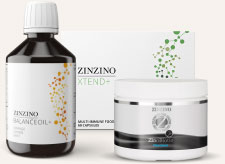Changer le code de test

Changer le code de test

Changer le code de test

C’est parti !

Votre résultat est :
Nous avons plus d’informations à vous montrer…

Êtes-vous sûr ?


Quel est votre pays d’origine ?

 Retour
Retour

Veuillez sélectionner votre âge, votre poids & votre taille
 Retour
Retour

Veuillez sélectionner votre sexe
 Retour
Retour

Are you currently pregnant or exclusively breastfeeding?
 Retour
Retour

What month of pregnancy are you in?
 Retour
Retour

Avez-vous récemment consommé des compléments Oméga-3 ?
 Retour
Retour

Quelle option décrit le mieux votre régime alimentaire ?
(Je mange de tout)
(Je ne mange pas de viande)
(Je ne mange que du poisson et des fruits de mer)
(Je ne mange pas de produits d'origine animale)
 Retour
Retour

Join Our Groundbreaking Test-Based Nutrition Study!
Important Information:
Screening Process: You'll begin by answering 6 brief questions to determine your suitability.
Suitability Notice: Only those who meet our specific study criteria will receive further details via email.
If Selected: You will be contacted with instructions and, as a thank you for your participation, you will receive a complimentary HbA1c test along with an additional test kit for the research and a questionnaire containing 15 more questions via post. Please follow the provided instructions carefully and return both the completed test kit and questionnaire as directed.
Confidentiality: All information you provide and any data we collect will be handled in a strictly confidential manner. Your data will be de-identified so that your test results cannot be linked to your personal information and will be used solely for research purposes.
Voluntary Withdrawal: You may withdraw from the study at any time by sending an email to research@zinzino.com.
Would you like to contribute to shaping the future of test-based nutrition?
 Retour
Retour

Thank you for your interest and for playing a vital role in advancing nutrition research!
Have you been taking Xtend or Xtend+, according to the recommended dose (at least 2 tablets per day), for at least the past 2 weeks?
 Retour
Retour

Have you been taking Zinobiotic+ according to the recommended dosage (2 scoops per day) for at least the past 2 weeks?
 Retour
Retour

How would you describe your BalanceOil+ consumption over the past 120 days?
 Retour
Retour

Over the next 30 days, do you plan to maintain the same consumption pattern for your Zinzino Health Protocol products as you reported above? (For example, if you currently do not use a product, select 'Yes' if you plan to continue not using it.)"
 Retour
Retour

Have you taken antibiotics in the past month?
 Retour
Retour

Have you taken laxatives in the past month?
 Retour
Retour

Please provide your email and address below so we can contact you and send out test-kits if you are selected for the study.
 Retour
Retour

Nous protégeons votre vie privée
Quel type de complément Oméga-3 ?
 Retour
Retour

C’est parti !

 Pas du tout ! Si vous préférez ne pas répondre aux questions avant d’obtenir votre résultat, vous pouvez ignorer cette étape.
Pas du tout ! Si vous préférez ne pas répondre aux questions avant d’obtenir votre résultat, vous pouvez ignorer cette étape.
Êtes-vous sûr ?


Quel est votre pays d’origine ?
 Retour
Retour

Veuillez sélectionner votre âge, votre poids & votre taille
 Retour
Retour

Veuillez sélectionner votre sexe
 Retour
Retour

Are you currently pregnant or exclusively breastfeeding?
 Retour
Retour

What month of pregnancy are you in?
 Retour
Retour

Avez-vous récemment consommé des compléments Oméga-3 ?
 Retour
Retour

Quelle option décrit le mieux votre régime alimentaire ?
(Je mange de tout)
(Je ne mange pas de viande)
(Je ne mange que du poisson et des fruits de mer)
(Je ne mange pas de produits d'origine animale)
 Retour
Retour

Join Our Groundbreaking Test-Based Nutrition Study!
Important Information:
Screening Process: You'll begin by answering 6 brief questions to determine your suitability.
Suitability Notice: Only those who meet our specific study criteria will receive further details via email.
If Selected: You will be contacted with instructions and, as a thank you for your participation, you will receive a complimentary HbA1c test along with an additional test kit for the research and a questionnaire containing 15 more questions via post. Please follow the provided instructions carefully and return both the completed test kit and questionnaire as directed.
Confidentiality: All information you provide and any data we collect will be handled in a strictly confidential manner. Your data will be de-identified so that your test results cannot be linked to your personal information and will be used solely for research purposes.
Voluntary Withdrawal: You may withdraw from the study at any time by sending an email to research@zinzino.com.
Would you like to contribute to shaping the future of test-based nutrition?
 Retour
Retour

Thank you for your interest and for playing a vital role in advancing nutrition research!
Have you been taking Xtend or Xtend+, according to the recommended dose (at least 2 tablets per day), for at least the past 2 weeks?
 Retour
Retour

Have you been taking Zinobiotic+ according to the recommended dosage (2 scoops per day) for at least the past 2 weeks?
 Retour
Retour

How would you describe your BalanceOil+ consumption over the past 120 days?
 Retour
Retour

Over the next 30 days, do you plan to maintain the same consumption pattern for your Zinzino Health Protocol products as you reported above? (For example, if you currently do not use a product, select 'Yes' if you plan to continue not using it.)"
 Retour
Retour

Have you taken antibiotics in the past month?
 Retour
Retour

Have you taken laxatives in the past month?
 Retour
Retour

Please provide your email and address below so we can contact you and send out test-kits if you are selected for the study.
 Retour
Retour

Souhaitez-vous être notifié(e) lorsque votre test sera prêt ?
 Retour
Retour

Nous protégeons votre vie privée
Activer les notifications
 Retour
Retour

Quel type de complément Oméga-3 ?
 Retour
Retour

Les résultats de votre test ne sont pas encore prêts
Merci pour vos réponses !
Nous sommes vraiment désolés !
Votre formulaire a déjà été envoyé.
Si vous avez d’autres questions, veuillez contacter l’Assistance client
Customer support
Votre échantillon contenait trop peu de sang
Votre échantillon ne se trouvait pas dans l’enveloppe
C’est parti !

 Pas du tout ! Si vous préférez ne pas répondre aux questions avant d’obtenir votre statut de vitamine D, vous pouvez ignorer cette étape.
Pas du tout ! Si vous préférez ne pas répondre aux questions avant d’obtenir votre statut de vitamine D, vous pouvez ignorer cette étape.
Êtes-vous sûr ?


Quel est votre pays d’origine ?
 Retour
Retour

Veuillez sélectionner votre âge, votre poids & votre taille
 Retour
Retour

Veuillez sélectionner votre sexe
 Retour
Retour

Avez-vous consommé récemment des compléments contenant de la vitamine D ?
 Retour
Retour

Quelle option décrit le mieux votre régime alimentaire ?
(Je mange de tout)
(Je ne mange pas de viande)
(Je ne mange que du poisson et des fruits de mer)
(Je ne mange pas de produits d'origine animale)
 Retour
Retour

Avez-vous déjà fait un Vitamin D Test Zinzino auparavant ?
 Retour
Retour

Nous sollicitons votre aide
 Retour
Retour

Souhaitez-vous être notifié(e) lorsque votre test sera prêt ?
 Retour
Retour

Veuillez entrer votre précédant identifiant pour le Vitamin D Test
 Retour
Retour

Indiquez si vous avez modifié la dose journalière depuis votre dernier test.
Fill in your increase or decrease of Vitamin D supplements
 Retour
Retour

À quelle fréquence avez-vous pris les compléments ?
ZinoShine+
jours par semaine
Xtend/Xtend+
jours par semaine
BalanceOil+/Vegan/AquaX
jours par semaine
Protect+
jours par semaine
Essent (capsules softgels)
jours par semaine
Another supplier
jours par semaine
 Retour
Retour

Nous protégeons votre vie privée
Activer les notifications


 Retour
Retour

Sélectionnez les produits
| ZinoShine+ |
0
|
nombre de fois par semaine |
| Xtend/Xtend+ |
0
|
nombre de fois par semaine |
| BalanceOil+/Vegan/AquaX |
0
|
nombre de fois par semaine |
| Protect+ |
0
|
nombre de fois par semaine |
| Essent+ (capsules softgels) |
0
|
nombre de fois par semaine |
| D’un autre fournisseur - nombre de fois par semaine |
0
|
nombre de fois par semaine |
 Retour
Retour

Votre résultat est :
Nous avons plus d’informations à vous montrer…

Les résultats de votre test ne sont pas encore prêts
Merci pour vos réponses !
C’est parti !

 Pas du tout ! Si vous préférez ne pas répondre aux questions avant d’obtenir votre statut de vitamine D, vous pouvez ignorer cette étape.
Pas du tout ! Si vous préférez ne pas répondre aux questions avant d’obtenir votre statut de vitamine D, vous pouvez ignorer cette étape.
Êtes-vous sûr ?


Quel est votre pays d’origine ?
 Retour
Retour

Veuillez sélectionner votre âge, votre poids & votre taille
 Retour
Retour

Veuillez sélectionner votre sexe
 Retour
Retour

Avez-vous consommé récemment des compléments contenant de la vitamine D ?
 Retour
Retour

Quelle option décrit le mieux votre régime alimentaire ?
(Je mange de tout)
(Je ne mange pas de viande)
(Je ne mange que du poisson et des fruits de mer)
(Je ne mange pas de produits d'origine animale)
 Retour
Retour

Avez-vous déjà fait un Vitamin D Test Zinzino auparavant ?
 Retour
Retour

Nous sollicitons votre aide
 Retour
Retour

Souhaitez-vous être notifié(e) lorsque votre test sera prêt ?
 Retour
Retour

Veuillez entrer votre précédant identifiant pour le Vitamin D Test
 Retour
Retour

Indiquez si vous avez modifié la dose journalière depuis votre dernier test.
Fill in your increase or decrease of Vitamin D supplements
 Retour
Retour

À quelle fréquence avez-vous pris les compléments ?
ZinoShine+
jours par semaine
Xtend/Xtend+
jours par semaine
BalanceOil+/Vegan/AquaX
jours par semaine
Protect+
jours par semaine
Essent (capsules softgels)
jours par semaine
Another supplier
jours par semaine
 Retour
Retour

Nous protégeons votre vie privée
Activer les notifications


 Retour
Retour

Sélectionnez les produits
| ZinoShine+ |
0
|
nombre de fois par semaine |
| Xtend/Xtend+ |
0
|
nombre de fois par semaine |
| BalanceOil+/Vegan/AquaX |
0
|
nombre de fois par semaine |
| Protect+ |
0
|
nombre de fois par semaine |
| Essent+ (capsules softgels) |
0
|
nombre de fois par semaine |
| D’un autre fournisseur - nombre de fois par semaine |
0
|
nombre de fois par semaine |
 Retour
Retour

Votre résultat est :
Nous avons plus d’informations à vous montrer…

Les résultats de votre test ne sont pas encore prêts
Merci pour vos réponses !
Nous sommes vraiment désolés !
Votre formulaire a déjà été envoyé.
Si vous avez d’autres questions, veuillez contacter l’Assistance client
Customer support
Votre échantillon contenait trop peu de sang
Votre échantillon ne se trouvait pas dans l’enveloppe














Merci ! Nous avons reçu vos réponses




 Retour
Retour


 Retour
Retour


 Retour
Retour


 Retour
Retour


 Retour
Retour


 Retour
Retour


 Retour
Retour









 Retour
Retour



Date:
Pays:
Sexe:

 Retour
Retour


 Retour
Retour



Date:
Pays:
Sexe:

 Retour
Retour


 Retour
Retour


 Retour
Retour


 Retour
Retour


 Retour
Retour


 Retour
Retour


 Retour
Retour


 Retour
Retour


 Retour
Retour


 Retour
Retour


 Retour
Retour


 Retour
Retour


 Retour
Retour


 Retour
Retour


 Retour
Retour


 Retour
Retour


 Retour
Retour





 Retour
Retour












































Nous sommes vraiment désolés !
Votre formulaire a déjà été envoyé.
Si vous avez d’autres questions, veuillez contacter l’Assistance client
Customer support
Votre échantillon contenait trop peu de sang
Votre échantillon ne se trouvait pas dans l’enveloppe
According to EFSA:
1. DHA contributes to the maintenance of normal brain function
2. EPA and DHA contribute to the normal function of the heart
According to EFSA, vitamin D:
3. contributes to normal absorption/utilization of calcium and phosphorus
4. contributes to normal blood calcium levels
5. contributes to the maintenance of normal bones
6. contributes to the maintenance of normal muscle function
7. contributes to the maintenance of normal teeth
8. contributes to the normal function of the immune system
9. has a role in the process of cell division

-
BalanceTest
-
Vitamin D Test
-
HbA1c Test
zinzino.com
Saisissez votre code de test
-
Information
-
Produits
-
Information
-
Liens de téléchargements
-
Produits



